Starting an Amusement Park? How to Begin
The feasibility study is the first step in starting an amusement
park because it provides important physical planning guidance. An
industry expert usually prepares this detailed study, which is
required by potential lenders and investors. It is critical that
designs are in line with market needs and justified investment.
This planning study provides initial physical parameters, such as
total land size needed and building space required. It also
recommends the attraction mix and major components. Click
here for more details on the feasibility study process.
The planning firm conducting the feasibility study may also expand
that effort and add initial amusement park design and master
planning. These could include images of the new leisure attraction
seen through the eyes of a typical visitor, which would help
define the project's "look and feel" in financing and promotional
presentations. This effort would also begin the detailed planning
process needed to move the project towards completion.
Although the actual process for starting an amusement park differs
from one project to another, the following paragraphs outline a
typical approach.
Concept
Development in the Feasibility Study
The development process generally begins with a site visit and
initial meeting to discuss the client's vision for the new leisure
attraction. Conceptually, the design effort begins with a blank
page. The greatest opportunity occurs when unique aspects of the
project can be effectively integrated with the proven experience
of comparable attractions elsewhere and potential market support
for this particular location. The resulting plan is generally the
strongest tool in financing and operational efforts.
Design
Charrette
As the feasibility study nears completion, the physical and
financial framework is in place for conceptual design. The
transition often occurs in a "design charrette" that brings
together the client group with designers and other creative team
members. The study's findings are discussed, and ideas presented
by all involved.
Specific goals for this brainstorming session differ, depending on
the type of leisure attraction being developed. For a new theme
park or amusement park, this effort can begin with selecting a
general overall theme and specific themes for individual areas.
The most popular themes typically involve adventure or fantasy.
From the start, it is important to keep the potential guest
experience in mind. Ultimate success depends on the new leisure
attraction meeting visitor expectations and desires.
Land
Use Plan
At the design charrette, the master planning process also begins.
It often starts with a "bubble diagram" that applies the
feasibility study's physical recommendations to the client's site.
This initial land use plan becomes more refined and detailed as it
adapts to the particular needs of the concept and site.
A "theme park" typically has five to seven distinctively themed
areas under a broad overall theme. Each themed area has a
unique identity that is reinforced by its architecture and
landscaping. .
The functional layout often follows the "loop" approach that is
common with many recent theme parks. In this layout, the themed
areas surround a central lake that often serves as the location
for evening spectacles. Another common layout is the "hub and
spoke" approach that Disneyland first popularized. It has a
central visual icon (such as a castle) as its hub, with themed
areas fanning out from this centerpiece. Other layouts are used,
and none is clearly superior to the others. Unique site
characteristics influence the choice of the best functional
layout, as well as other design aspects.
After establishing the themed areas, individual components are
distributed within each area. Major rides and shows are typically
placed at the edges in order to attract guests throughout the
park. This approach helps maximize overall holding capacity and
crowd flow. The main shops are generally placed near the exit for
convenience.
Based on typical guest behavior and pedestrian planning standards,
a visitor circulation plan can also be prepared to ensure smooth
movement throughout the theme park. This enhances guest comfort
and prevents bottlenecks.
Illustrated
Master Plan
Functional needs are combined with visual theming in an
illustrated master plan. Structures are often color-coded by type
in order to aid optimum distribution and placement.
Aerial
Perspective
Although functional aspects are critical for operational success,
a new theme park also needs to be visually appealing and
understandable to non-professional individuals involved with the
project. An effective way of showcasing a new theme park is with
an aerial perspective, often from a "bird's-eye" perspective. This
perspective gives a better sense of what the theme park would look
like as it more clearly comes to life in the eyes of viewers. As
the overall design vision for the project takes form, more
detailed views of smaller parts of the project (such as an
individual themed area) can also be prepared.
Concept
Art
Our visual perspective can also shift to ground level, now that
we have a detailed overall perspective. These artist conception
images provide a view of the new leisure attraction through the
eyes of a typical visitor.
Past
Consulting Projects
Selected past theme park and amusement park projects are
described below. These include past consulting efforts by John
Gerner, LBA's managing director.
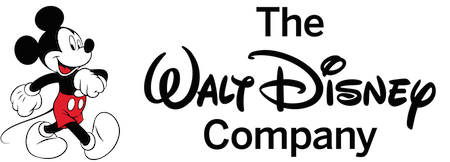
Proposed Disney Theme Park (Latin
America)
The Walt Disney Company is the leading theme park developer
in the world. Its locations include Disneyland, Walt Disney
World, Tokyo Disney Resort, Disneyland Park (Paris), Hong
Kong Disneyland, and Shanghai Disneyland. As a senior
consultant with Economics Research Associates in the 1980s,
John Gerner (LBA's managing director) evaluated locations in
Latin America for a proposed Disney theme park.
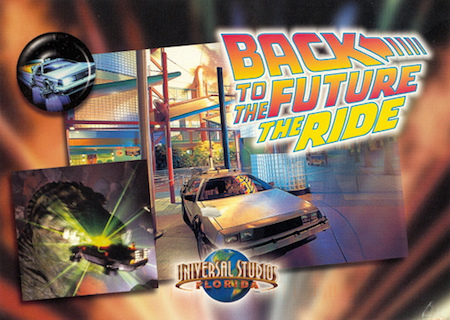
Universal Studios: Back to the Future
- The Ride (Worldwide)
Universal Studios has theme parks in the USA, Japan, and
Singapore. John Gerner, LBA's managing director, served as
president of Berkshire Ridefilm during the early 1990s.
During that time, the company produced the highly acclaimed
simulation film for "Back to the Future - The Ride", which
was directed by Douglas Trumbull.

Major New Theme Park (China)
Village Roadshow is Australia's largest amusement park
operator and owns Warner Bros. Movie World, Sea World,
Wet'n'Wild Water World, and other attractions. In 2011, LBA
evaluated the market and financial potential of developing a
major new attraction in China for Village Roadshow.
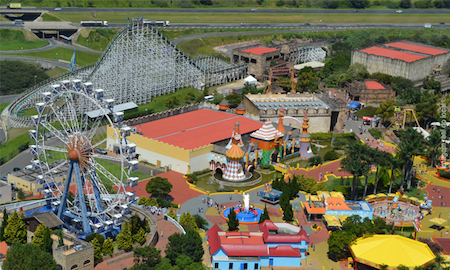
Hopi Hari (Brazil)
Hopi Hari is one of the largest theme parks in South
America, and is located near Sao Paulo in Brazil. It is 76
hectares (188 acres) in size, and cost USD$220 million to
develop. As a subcontractor to International Theme
Park Services, John Gerner (LBA's managing director)
evaluated the market and financial feasibility of Hopi Hari.

Pavilion Nostalgia Park (USA)
Pavilion Nostalgia Park is located within the Broadway at
the Beach tourist complex in Myrtle Beach, and opened in
2007. During its planning stage, LBA evaluated Pavilion
Nostalgia Park's potential financial performance for
Burroughs & Chapin Co, Inc.
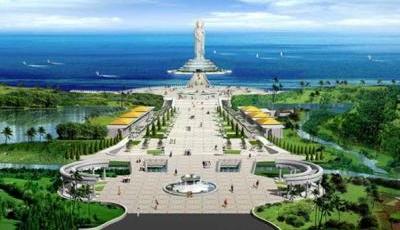
Nanshan Cultural Tourism Zone (China)
The Nanshan Culture Tourism Zone is approximately 27
hectares (67 acres) in size, and contains several tourist
attractions. These include the Hainan Culture Park, Felicity
and Longevity Park, and Buddhist Culture Park. Its
centerpiece is the Guanyin Statue of Hainan, which is
currently the fourth tallest statue in the world. As a
subcontractor to Economics Research Associates, John Gerner
(LBA's managing director) evaluated the feasibility of
developing this major tourism project.
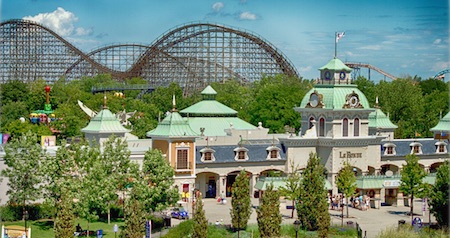
La Ronde (Canada)
La Ronde is a theme park in Montreal that is approximately
59 hectares (146 acres) in size. It offers 40 rides,
including ten roller coasters. As a subcontractor to
Economics Research Associates, John Gerner (LBA's managing
director) evaluated the potential of expanding this theme
park and adding year-round uses on the site. These uses
included a retail entertainment center, waterpark resort
hotel, and expanded marina.
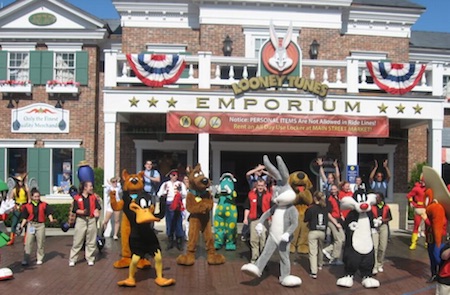
Six Flags New England (USA)
Formerly named "Riverside Park", Six Flags New England is
located in Massachusetts. As a subcontractor to Economics
Research Associates, John Gerner (LBA's managing director)
evaluated the theme park's operating history, market
potential, and likely annual attendance based on its planned
capital improvements.
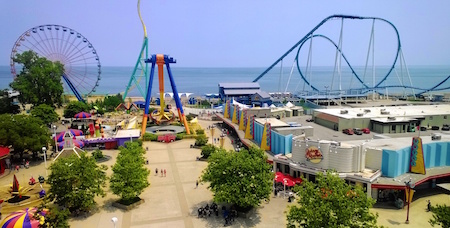
Cedar Point (USA)
Cedar Point is a major theme park in Ohio. John Gerner
(LBA's managing director) was a senior consultant with
Economics Research Associates. He evaluated the impact of
various factors on past operating performance. These factors
included capital reinvestment, pricing, marketing efforts,
economic conditions, and weather.
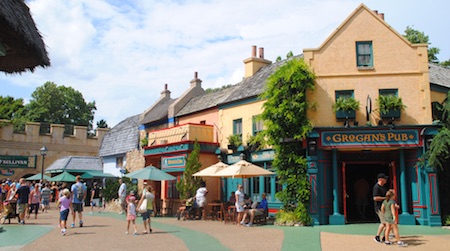
Busch Gardens Williamsburg (USA)
Busch Gardens Williamsburg is located in Virginia and has
been repeatedly voted the world's most beautiful theme park
by amusement park enthusiasts. John Gerner (LBA's managing
director) was an internal productivity supervisor during the
early 1980s, and evaluated the operating performance of
individual rides and other components of the park. He also
examined past financial performance based on various
factors, and prepared the theme park's financial breakeven
analysis.









